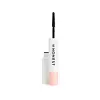What's inside
What's inside
 Key Ingredients
Key Ingredients

 Benefits
Benefits

 Concerns
Concerns

 Ingredients Side-by-side
Ingredients Side-by-side

Water
Skin ConditioningCopernicia Cerifera Wax
Stearic Acid
CleansingHydrogenated Jojoba Oil
AbrasiveGlyceryl Stearate
EmollientAcacia Senegal Gum
MaskingGlycerin
HumectantOleic/Linoleic/Linolenic Polyglycerides
EmollientOryza Sativa Bran Wax
Skin ConditioningVp/Eicosene Copolymer
Aminomethyl Propanol
BufferingPhenoxyethanol
PreservativeHydroxyethylcellulose
Emulsion StabilisingAcrylates Copolymer
Ethylhexylglycerin
Skin ConditioningDisodium Phosphate
BufferingPolysorbate 60
EmulsifyingSodium Phosphate
BufferingCI 77499
Cosmetic ColorantWater, Copernicia Cerifera Wax, Stearic Acid, Hydrogenated Jojoba Oil, Glyceryl Stearate, Acacia Senegal Gum, Glycerin, Oleic/Linoleic/Linolenic Polyglycerides, Oryza Sativa Bran Wax, Vp/Eicosene Copolymer, Aminomethyl Propanol, Phenoxyethanol, Hydroxyethylcellulose, Acrylates Copolymer, Ethylhexylglycerin, Disodium Phosphate, Polysorbate 60, Sodium Phosphate, CI 77499
Water
Skin ConditioningBeeswax
Emulsion StabilisingPotassium Cetyl Phosphate
EmulsifyingGlycerin
HumectantGlyceryl Stearate Se
EmulsifyingCopernicia Cerifera Wax
Castor Isostearate Beeswax Succinate
Skin ConditioningAcacia Senegal Gum
MaskingCellulose
AbsorbentGlyceryl Behenate
EmollientJojoba Esters
EmollientTocopherol
AntioxidantEthylhexylglycerin
Skin ConditioningCaprylyl Glycol
EmollientCetyl Palmitate
EmollientSorbitan Olivate
EmulsifyingSorbitan Palmitate
EmulsifyingXanthan Gum
EmulsifyingCaprylic/Capric Glycerides
EmollientSodium Benzoate
MaskingCellulose Gum
Emulsion StabilisingPotassium Sorbate
PreservativeSodium Phytate
Phosphoric Acid
BufferingCI 77499
Cosmetic ColorantGlyceryl Stearate
EmollientZea Mays Starch
AbsorbentCetearyl Alcohol
EmollientWater, Beeswax, Potassium Cetyl Phosphate, Glycerin, Glyceryl Stearate Se, Copernicia Cerifera Wax, Castor Isostearate Beeswax Succinate, Acacia Senegal Gum, Cellulose, Glyceryl Behenate, Jojoba Esters, Tocopherol, Ethylhexylglycerin, Caprylyl Glycol, Cetyl Palmitate, Sorbitan Olivate, Sorbitan Palmitate, Xanthan Gum, Caprylic/Capric Glycerides, Sodium Benzoate, Cellulose Gum, Potassium Sorbate, Sodium Phytate, Phosphoric Acid, CI 77499, Glyceryl Stearate, Zea Mays Starch, Cetearyl Alcohol
Ingredients Explained
These ingredients are found in both products.
Ingredients higher up in an ingredient list are typically present in a larger amount.
Acacia Senegal Gum has skin soothing, thickening, and formulation stabilizing properties. It comes from the Acacia tree that is native to sub-Saharan Africa.
Ci 77499 is also hydrated iron III oxide. It is created from mixing red and black iron oxides. This helps give shades of darkness to a product.
Iron III oxides are classified as inorganic chemicals for coloring.
Copernicia Cerifera Wax comes from a palm tree native to Brazil; another name for this ingredient is Carnauba Wax.
This ingredient is used to thicken texture and also leaves behind a film when applied.
Fun fact: This wax has the highest melting point of all natural waxes and low solubility.
Learn more about Copernicia Cerifera WaxEthylhexylglycerin (we can't pronounce this either) is commonly used as a preservative and skin softener. It is derived from glyceryl.
You might see Ethylhexylglycerin often paired with other preservatives such as phenoxyethanol. Ethylhexylglycerin has been found to increase the effectiveness of these other preservatives.
Glycerin is already naturally found in your skin. It helps moisturize and protect your skin.
A study from 2016 found glycerin to be more effective as a humectant than AHAs and hyaluronic acid.
As a humectant, it helps the skin stay hydrated by pulling moisture to your skin. The low molecular weight of glycerin allows it to pull moisture into the deeper layers of your skin.
Hydrated skin improves your skin barrier; Your skin barrier helps protect against irritants and bacteria.
Glycerin has also been found to have antimicrobial and antiviral properties. Due to these properties, glycerin is often used in wound and burn treatments.
In cosmetics, glycerin is usually derived from plants such as soybean or palm. However, it can also be sourced from animals, such as tallow or animal fat.
This ingredient is organic, colorless, odorless, and non-toxic.
Glycerin is the name for this ingredient in American English. British English uses Glycerol/Glycerine.
Learn more about GlycerinGlyceryl Stearate is a mix of glycerin and stearic acid.
It is used to stabilize the mixing of water and oil ingredients. By preventing these ingredients from separating, it can help elongate shelf life. It can also help thicken the product's texture.
As an emollient, it helps soften skin and supports barrier-replenishing ingredients.
In cosmetics, Glyceryl Stearate is often made from vegetable oils or synthetically produced.
This ingredient may not be fungal-acne safe
Fun fact: The human body also creates Glyceryl Stearate naturally.
Learn more about Glyceryl StearateWater. It's the most common cosmetic ingredient of all. You'll usually see it at the top of ingredient lists, meaning that it makes up the largest part of the product.
So why is it so popular? Water most often acts as a solvent - this means that it helps dissolve other ingredients into the formulation.
You'll also recognize water as that liquid we all need to stay alive. If you see this, drink a glass of water. Stay hydrated!
Learn more about Water